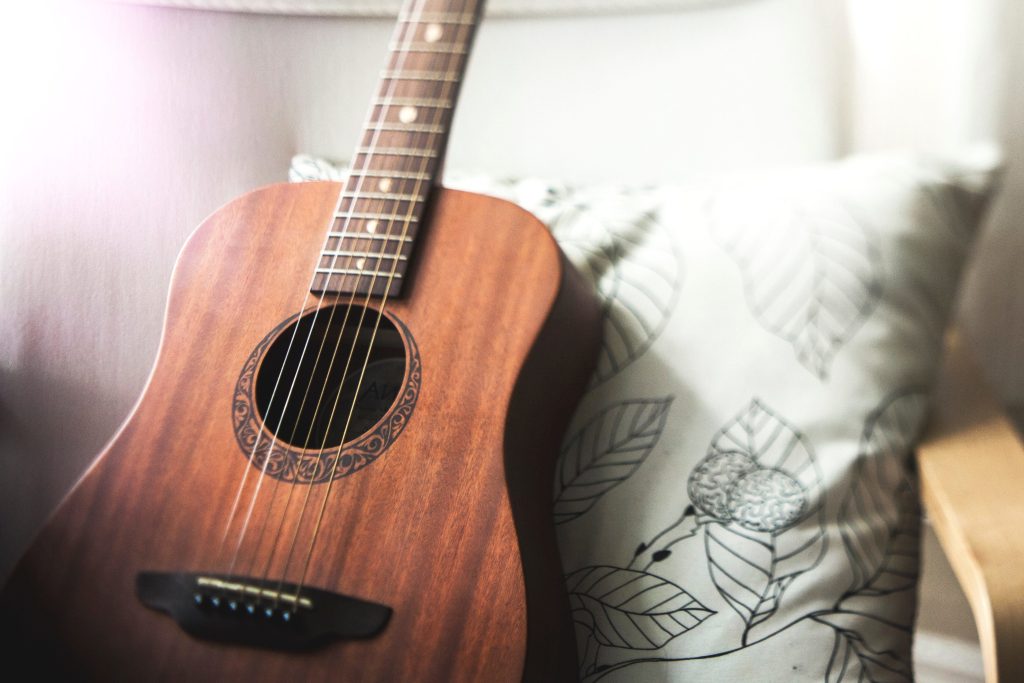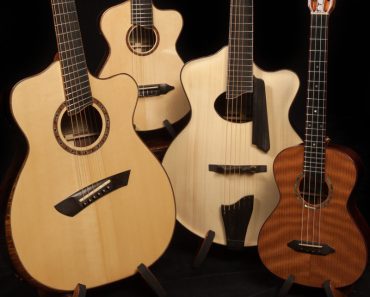The instrument may be used for classical concertos, jazz improvisation, or punk rock anthems with equal aplomb. While the electric guitar is appropriate for many genres, it is actually the acoustic guitar—its more illustrious relative—that has the most versatility.

What Is an Acoustic Guitar?
An acoustic guitar has vibrating strings above a hollow chamber in the body that produces sound when air is let into it. The vibrations travel through the air and do not require electrical amplification (though many acoustic guitars are also capable of functioning as electric guitars).
How Many Strings Does an Acoustic Guitar have?
Six-string guitars are the most common type. A 12-string guitar is one of the more popular variations, where each string is duplicated with another that has an identical pitch, creating a beautiful chorusing effect.
With both their fingers and a pick, acoustic guitar players create noise. This varies according to the genre of music, the sort of guitar being played, and the player’s personal style.
What Are Nylon String Acoustic Guitars?
The first acoustic guitars were quite similar to today’s nylon string guitars. Classical and Spanish guitars, as well as their variations, fall within the “nylon string” category. Here are a few of their most important features:
The bodies of the guitars are constructed of hollow wood with a large soundhole. The top panel on each guitar is made of spruce, which is the most popular wood used in that area.
Most acoustic guitars have wide, flat necks that allow the strings to be set far apart. However, the type of wood used in the neck varies.
In the low range, nylon string guitars have a smooth sound with a lot of resonance in the lower mid-range.
Traditionally, these guitars’ strings were constructed of catgut (literally dried cat intestines), but nowadays nylon is the most common material.
What Are Steel String Acoustic Guitars?
Steel-string guitars are considerably more varied than nylon-stringed acoustic guitars.
The majority of the acoustic guitars played in rock, folk, country, and bluegrass are found here.
A typical nylon string guitar has a hollow body, whereas the body of this instrument is solid. It’s constructed similarly to a nylon string guitar, but with more frequent shape and size changes. The smallest of these guitar shapes are known as Range, Parlor, Grand Concert, Auditorium, Dreadnought, and Jumbo.
The dreadnaught acoustic guitar is the most popular design among contemporary players. Martin guitars are well-known for their dreadnaughts, as is Gibson. Taylor has made a greater name for itself with its grand concert and theatre-style guitars than a rival company, Martin.
The majority of spruce tops are made from spruce. Some acoustics (particularly those manufactured by Ovation) have rounded plastic backs.
Although steel guitars are often made of metal, resonator guitars are not one of them. These instruments, which use a slide to play them, are less popular with novices.
The necks are generally narrower and more rounded than those on nylon string guitars. Rosewood is the most common material, although pau Ferro is also prevalent.
Although the term “steel string” implies that the guitar has a steel string, other strings made of nickel, aluminium, and other metals may be used.
The metal strings provide considerably brighter, treble-focused tones that project at higher volumes.
Tips for Playing Acoustic Guitar
If you’re a beginner acoustic guitarist, there are several resources available to help you get up to speed.
Begin your acoustic guitar journey by mastering guitar chords. This allows you to sing along with others. Remember that it’s not just about chord forms; it’s also about learning strumming patterns.
Practice is made up of both technique and theory. You train your fingers to perform the tasks you want them to accomplish when you practice technique. When you learn about theory, you discover where your fingertips can go and why.
